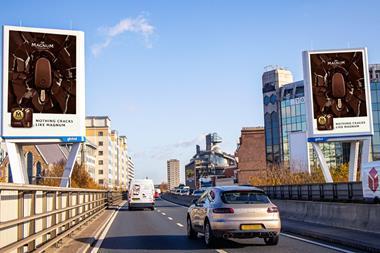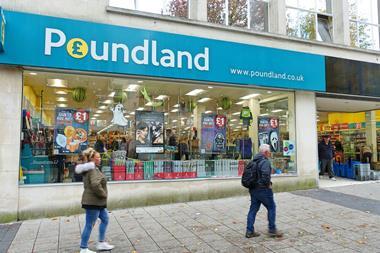Does the number of people involved show buying is too complex? Julian Hunt reports
Earlier this year, The Grocer attempted to lift the lid on a key issue for the whole industry: the number of people now involved in the buying process in the major retail chains. We dubbed our feature ‘The Buying Game’ and used it to highlight the fact that the whole process was becoming increasingly complex (see The Grocer, April 26, p35). But we wanted to take our research a step further to see if we could quantify exactly how many people are involved in the buying process. To find the answer, we commissioned exclusive research from BMRB International. And the results are published here for the first time. Welcome to ‘The Buying Game Part Two’.
We asked BMRB to quiz key personnel in the head offices of multiple retailers about this issue. They talked with buyers, buying managers and directors from across the supermarket sector, and the results, published in the box, are revealing.
Almost a quarter of those interviewed said that six or more people are generally involved in the buying process in their business - with 14% saying it was more than 10. A similar number, 24%, felt the figure was more like four to five people, while almost half of those interviewed said it was between one and three.
Just as fascinating are the responses from store managers working for the multiples. When we asked them how many people they thought were involved in making a buying decision, 40% of store managers felt it was more than 10. Do these managers know something head office doesn’t?
On the face of it, the figures confirm what many suppliers have long suspected- when it comes to dealing with some of the major chains, there are too many people involved in the process. But, as well as making life more difficult for suppliers, shouldn’t retailers worry about this apparent increase in the complexities of the buying process?
Some experts think they should, including Richard Hull, from Cap Gemini Ernst & Young. He says: “The complexity of product or supplier introduction is becoming an art form. It should be relatively straightforward because it should be driven by the needs of consumers in the category. But there are so many other people who want to put in their pennyworth. Marketing, food technology, product development, commercial, or group buying. The list goes on. It is perhaps becoming more difficult than it should be.”
Hull is one of those who argues that the fewer the number of people who ‘touch’ a product the better and he says getting this right is absolutely fundamental to good retailing. “This is a cyclical thing,” he adds. “I think at the moment retailers are not tackling this issue because life’s not that bad. Within six to 12 months you will see it being tackled either as business generally gets more difficult or as individual retailers see their sales get difficult.”
So what’s the problem with having a complex system in place to manage the complex business of supplier relationships? Well, the biggest problem, says one top buyer, is that it can slow down decision making and affect the speed at which new ideas get into stores. “If you are not careful the products are on TV before they are on your shelves.”
He misses the days when fewer people were involved, but says there are good reasons why the process has got so complicated - whether it’s having someone to take a holistic view on overrider targets, for instance, or a planner to ensure shelf space is maximised across store formats.
Peter Freedman of McKinsey says that while the complexity of the buying process can be a pain for suppliers, it is something they can live with. “They use it as an opportunity to build relationships and interact with a broader team, whether on brand issues or supply chain, rather than dealing with a single buyer who will focus on a single issue - price.”
Freedman feels it’s more of an issue for retailers. And Hull agrees: “There’s lots that can be done to make it easier. The question is whether retailers want to listen.”
Earlier this year, The Grocer attempted to lift the lid on a key issue for the whole industry: the number of people now involved in the buying process in the major retail chains. We dubbed our feature ‘The Buying Game’ and used it to highlight the fact that the whole process was becoming increasingly complex (see The Grocer, April 26, p35). But we wanted to take our research a step further to see if we could quantify exactly how many people are involved in the buying process. To find the answer, we commissioned exclusive research from BMRB International. And the results are published here for the first time. Welcome to ‘The Buying Game Part Two’.
We asked BMRB to quiz key personnel in the head offices of multiple retailers about this issue. They talked with buyers, buying managers and directors from across the supermarket sector, and the results, published in the box, are revealing.
Almost a quarter of those interviewed said that six or more people are generally involved in the buying process in their business - with 14% saying it was more than 10. A similar number, 24%, felt the figure was more like four to five people, while almost half of those interviewed said it was between one and three.
Just as fascinating are the responses from store managers working for the multiples. When we asked them how many people they thought were involved in making a buying decision, 40% of store managers felt it was more than 10. Do these managers know something head office doesn’t?
On the face of it, the figures confirm what many suppliers have long suspected- when it comes to dealing with some of the major chains, there are too many people involved in the process. But, as well as making life more difficult for suppliers, shouldn’t retailers worry about this apparent increase in the complexities of the buying process?
Some experts think they should, including Richard Hull, from Cap Gemini Ernst & Young. He says: “The complexity of product or supplier introduction is becoming an art form. It should be relatively straightforward because it should be driven by the needs of consumers in the category. But there are so many other people who want to put in their pennyworth. Marketing, food technology, product development, commercial, or group buying. The list goes on. It is perhaps becoming more difficult than it should be.”
Hull is one of those who argues that the fewer the number of people who ‘touch’ a product the better and he says getting this right is absolutely fundamental to good retailing. “This is a cyclical thing,” he adds. “I think at the moment retailers are not tackling this issue because life’s not that bad. Within six to 12 months you will see it being tackled either as business generally gets more difficult or as individual retailers see their sales get difficult.”
So what’s the problem with having a complex system in place to manage the complex business of supplier relationships? Well, the biggest problem, says one top buyer, is that it can slow down decision making and affect the speed at which new ideas get into stores. “If you are not careful the products are on TV before they are on your shelves.”
He misses the days when fewer people were involved, but says there are good reasons why the process has got so complicated - whether it’s having someone to take a holistic view on overrider targets, for instance, or a planner to ensure shelf space is maximised across store formats.
Peter Freedman of McKinsey says that while the complexity of the buying process can be a pain for suppliers, it is something they can live with. “They use it as an opportunity to build relationships and interact with a broader team, whether on brand issues or supply chain, rather than dealing with a single buyer who will focus on a single issue - price.”
Freedman feels it’s more of an issue for retailers. And Hull agrees: “There’s lots that can be done to make it easier. The question is whether retailers want to listen.”














No comments yet